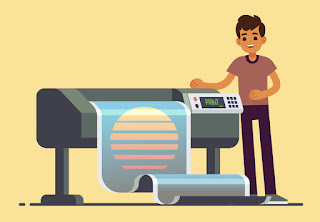Above and beyond customer service leaves customers satisfied and impressed.
Customer service is essential for many clients in determining their overall satisfaction with your company. Most customers have little patience for poor customer service.
Customers with a bad customer service experience are more likely to leave than those unhappy with prices. That’s a primary reason why 89% of consumers switched to a competitor after a poor customer experience.
Customer retention saves your company money. Repeat customers spend more and in larger amounts while also bringing in more customers. Customer service is at the forefront of keeping customers happy and coming back for more. Providing top-notch customer service is imperative for the success of your business.
Check out the qualities that make for great customer service.
1. Customer service skill: positivity
Often, customer service representatives are dealing with angry customers.
It’s important for them to keep a positive spin on the situation while not being insensitive to the customer’s emotional state.
Being aware of the customer’s emotions is a key part of empathy.
2. Customer service skill: empathy
Consumers use emotions over information when evaluating companies.
Therefore, customer service should focus on the emotions of the customer. This begins by being able to perceive these emotions and then meeting the customer’s emotional needs. Ultimately, the customer is going to take away how they felt during the encounter. Make sure it’s a positive experience!
This task of guiding the customer’s emotions is greatly aided by clear communication.
3. Customer service skill: effective communication
Unclear communication and an inability to clearly answer customer questions escalate the situation, turning dissatisfied customers into angry ones.
Speaking isn’t the only form of communication. Written skills are important as well. Although often underlooked, writing within customer service can be more challenging because it’s harder to convey a tone. An email taken the wrong way will further aggravate the customer.
One effective way to avoid aggravating customers is by responding in a timely manner.
4. Customer service skill: timeliness
The quicker you respond, the better.
Of online consumers, 71% expect to be helped within five minutes, and 31% will go elsewhere if help isn’t immediately provided. Being available to quickly help customers is an important aspect of great customer service.
It’s also important to streamline your methods because the more time you spend on one customer, the later you’ll be able to address another’s needs. Therefore, find the balance between being attentive and listening to the customer’s needs while moving things along in a timely fashion. Being tech-savvy and able to use the programs within your company can go a long way in speeding up the process.
Having a genuine work ethic will speed up the process as well.
5. Customer service skill: work ethic
A strong work ethic is important in any role, especially in customer service.
Going above and beyond to meet customers’ needs will help your business stand out positively, building loyalty and trust.
How to Develop Quality Customer Service Representatives
Quality customer service primarily comes down to hiring the right people who naturally possess the above qualities. However, there are specific actions your business can take to develop quality customer service representatives.
1. Provide customer service training
Customer service training can take many forms, such as a formal course, online resources, or a mentor/coach.
Whatever form the training occurs, it should be effective. Your customer service representatives should feel confident in addressing various customer needs. Your employee should feel comfortable with company knowledge, knowing the buying process and your product/service. Learning all the ins and outs can take time, depending on the company. This is why employee retention is important.
If your employee doesn’t know the answer to the customer’s inquiry, they should be able to get the customer to someone who can.
2. Have a clear customer service pathway
If the customer service representative can’t answer the question, it’s imperative the next person in the chain can.
Customers hate having to repeat themselves over and over to multiple people within the same company. The fewer people they need to talk to and the faster the problem can be resolved, the happier the customer is.
It’s okay if the employee doesn’t know the answer to a question. Learning how to say, “I don’t know, but I know someone who does,” will help keep customers satisfied.
3. Thank the customer
Every customer complaint indicates about 26 other unhappy customers who remained silent.
Many unhappy silent customers leave. 91% of the 96% of unhappy customers who don’t complain will leave and never come
Therefore, although it may be unpleasant to be on the receiving end of an unsatisfied customer, ultimately, the customer is doing you a service. They are pointing out a problem that has affected many others. Now, you can fix the problem and retain customers.
After the altercation, consider sending the customer a thank you card for their feedback. This will further help your company get back on good terms with the customer while also elevating your business in the customer’s eyes. Perhaps provide a personal discount for the customer to further share your appreciation for their input.
We’re here to help you satisfy your customers by printing marketing materials your customers enjoy. For all your printing needs, including thank you cards, we’ve got you and your customers covered!






